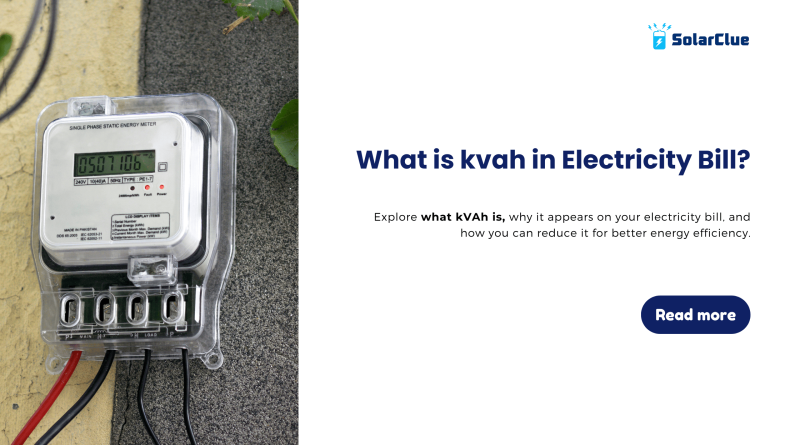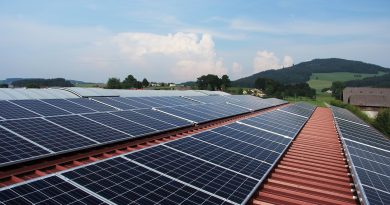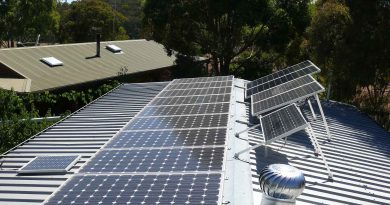What is kvah in Electricity Bill?
In an electricity bill, there are various terms that can often seem confusing, especially if you’re unfamiliar with the technicalities. One such term is kVAh, which stands for kilovolt-ampere hours. While many of us are familiar with kWh (kilowatt-hours), which measures the actual energy consumed, kVAh includes both the active power and reactive power consumed by your electrical appliances. In this blog, we’ll break down what kVAh is, why it appears on your electricity bill, and how you can reduce it for better energy efficiency.
Table of Contents
Understanding kVAh: Active vs. Reactive Power
To fully grasp the concept of kVAh, it’s essential to understand the distinction between active power (kW) and reactive power (kVAR):
- Active Power (kW): This is the actual usable power that performs work, such as lighting a bulb or running a motor.
- Reactive Power (kVAR): This power is necessary for maintaining the voltage levels in the electrical system, but it doesn’t perform any productive work.
The combination of active power (kW) and reactive power (kVAR) is referred to as apparent power, which is measured in kilovolt-ampere (kVA). The energy consumed over time is expressed in kVAh (kilovolt-ampere hours), which appears on your electricity bill.
Why is kVAh Used in Billing?
In modern energy billing systems, kVAh is used instead of kWh to encourage consumers to optimize their power factor. Power factor is the ratio of active power to apparent power, and a low power factor indicates inefficient use of electricity. Utility companies use kVAh billing to charge for the total energy consumed, including both active and reactive power, to promote more efficient energy usage.
Comparison of kWh vs kVAh Billing
| Parameter | kWh Billing | kVAh Billing |
|---|---|---|
| Definition | Measures only active power consumption | Measures both active and reactive power |
| Common in Residential | Yes | No |
| Used in Industrial | Sometimes | Common |
| Influenced by Power Factor | No | Yes |
| Energy Efficiency Impact | Less emphasis on efficiency | Encourages better energy efficiency |
| Billing Impact | Lower bills for inefficient systems | Higher bills for inefficient power usage |
How Does kVAh Affect Your Electricity Bill?
For consumers, particularly in industrial and commercial sectors, kVAh billing can lead to higher costs if their power factor is low. This happens because inefficient appliances consume more reactive power, thus increasing your apparent power consumption (kVAh). A high kVAh reading on your bill means you’re using more energy overall, which leads to higher electricity costs.
How to Reduce kVAh Charges?
1. Improve Power Factor: Install power factor correction equipment like capacitors to reduce reactive power consumption.
2. Use Energy-Efficient Appliances: Appliances with a higher efficiency will have a better power factor.
3. Monitor Your Electrical Systems: Regularly monitor and maintain your electrical systems to ensure efficient energy use.
Benefits of kVAh Billing for Consumers
While kVAh billing might seem like an extra burden, it actually encourages consumers to use energy more efficiently. By improving your power factor and reducing reactive power consumption, you can lower your electricity bills over time. Additionally, it helps reduce the load on the electrical grid, contributing to overall energy efficiency.
Optimize Your Energy Usage
Understanding kVAh in your electricity bill can help you manage your energy consumption better. By improving your power factor, not only do you reduce your electricity costs, but you also contribute to a more efficient and sustainable electrical grid.
Explore Solar Power Solutions with SolarClue!
Looking to further reduce your energy costs and move towards a more sustainable future? Consider switching to solar energy! SolarClue offers top-tier solar products, including solar panels, inverters, and energy storage solutions. By adopting solar power, you can reduce your dependence on conventional electricity, leading to significant savings on your electricity bills.
Visit SolarClue today and start your journey towards energy independence and a greener future.
FAQs
1. What is the difference between kVAh and kWh?
kWh measures only active power consumption, while kVAh includes both active and reactive power.
2. Why is my electricity bill measured in kVAh?
If your bill is based on kVAh, it’s likely because your power factor is being accounted for, which encourages efficient energy use.
3. How can I reduce my kVAh consumption?
Improve your power factor by installing power correction devices and using energy-efficient appliances.
4. Can I switch to solar to reduce kVAh charges?
Yes, solar power can reduce your reliance on grid electricity and potentially lower your kVAh consumption.
5. What is a good power factor?
A power factor close to 1 is ideal, as it indicates efficient energy usage.




